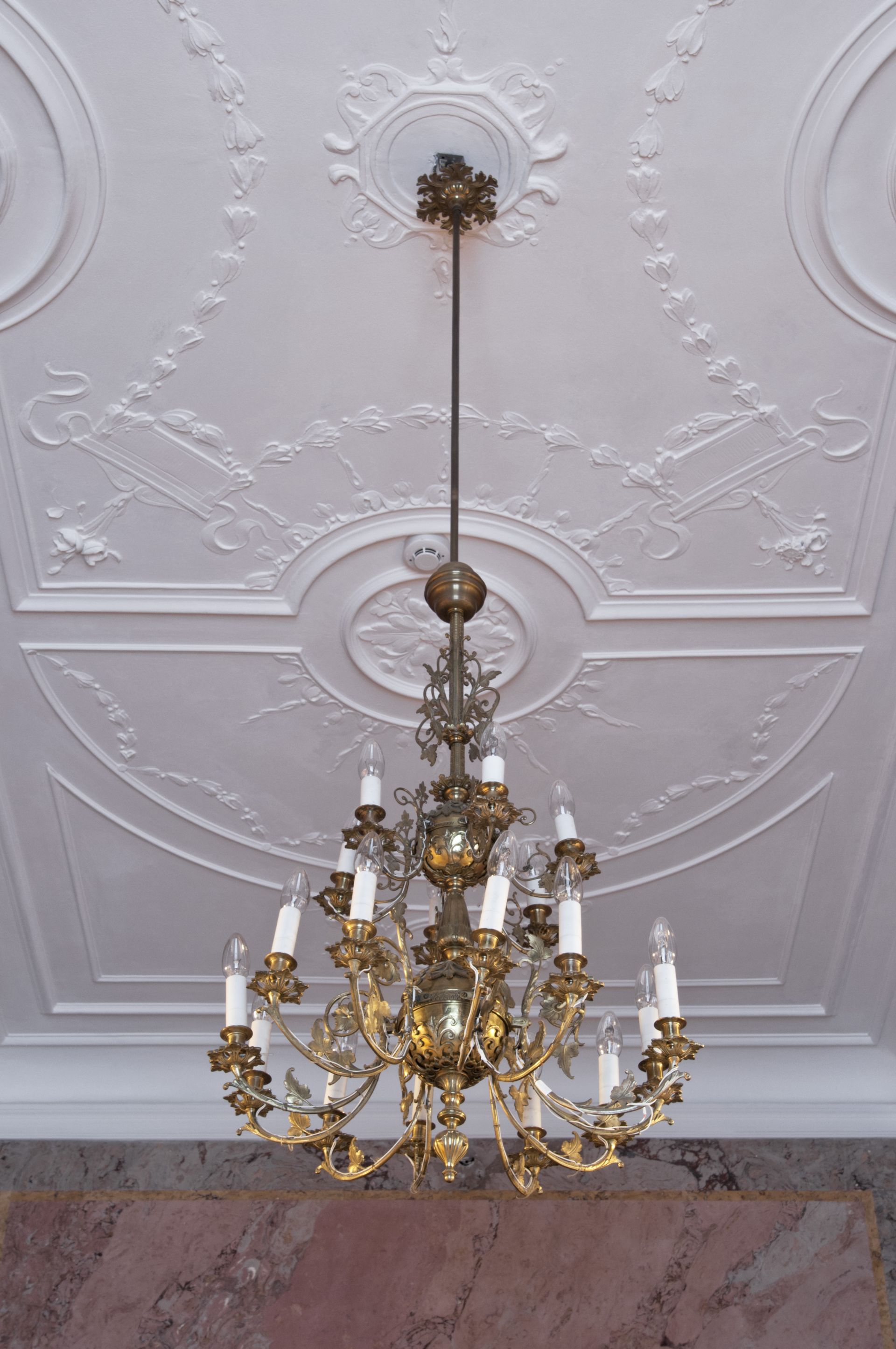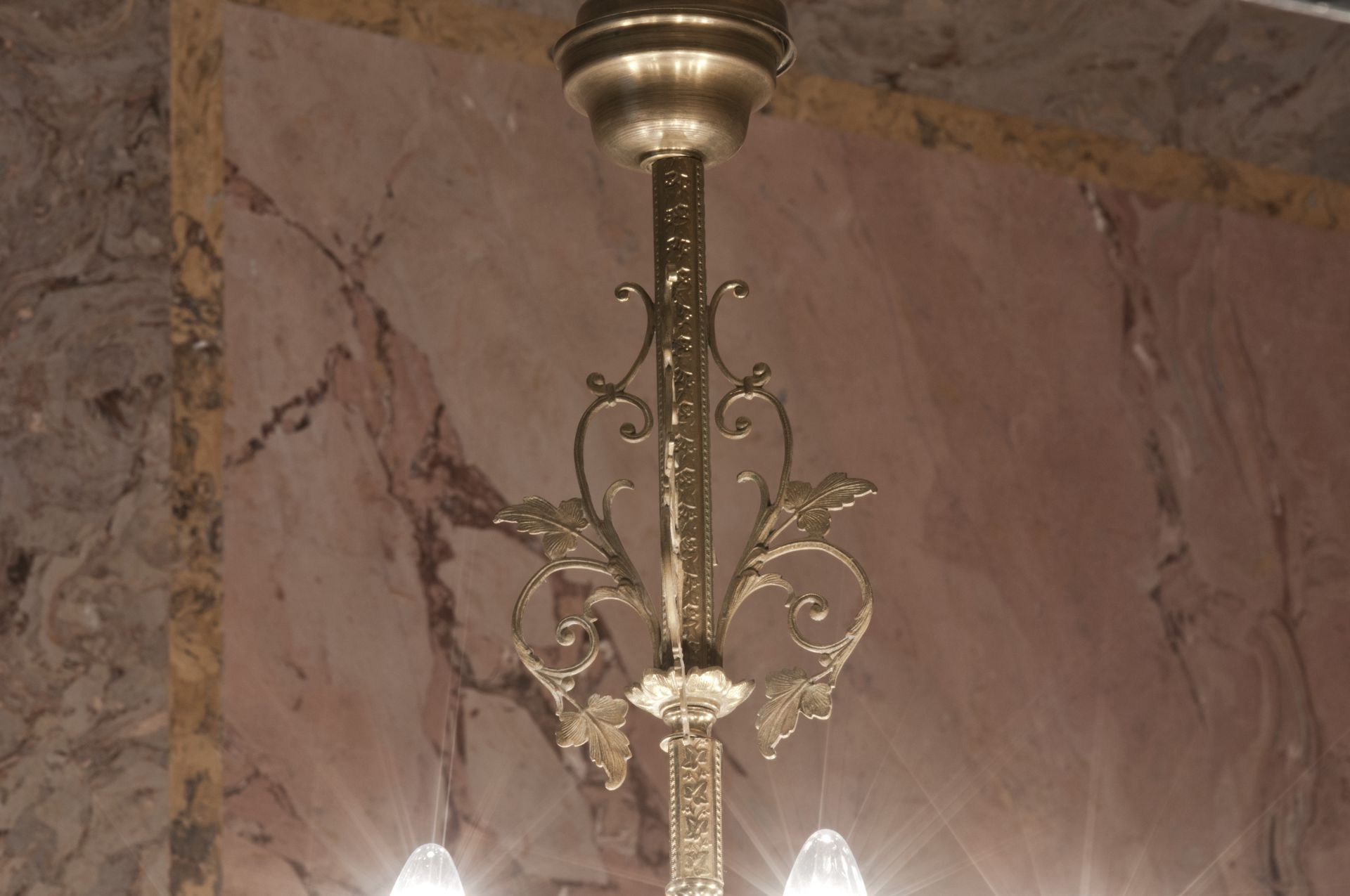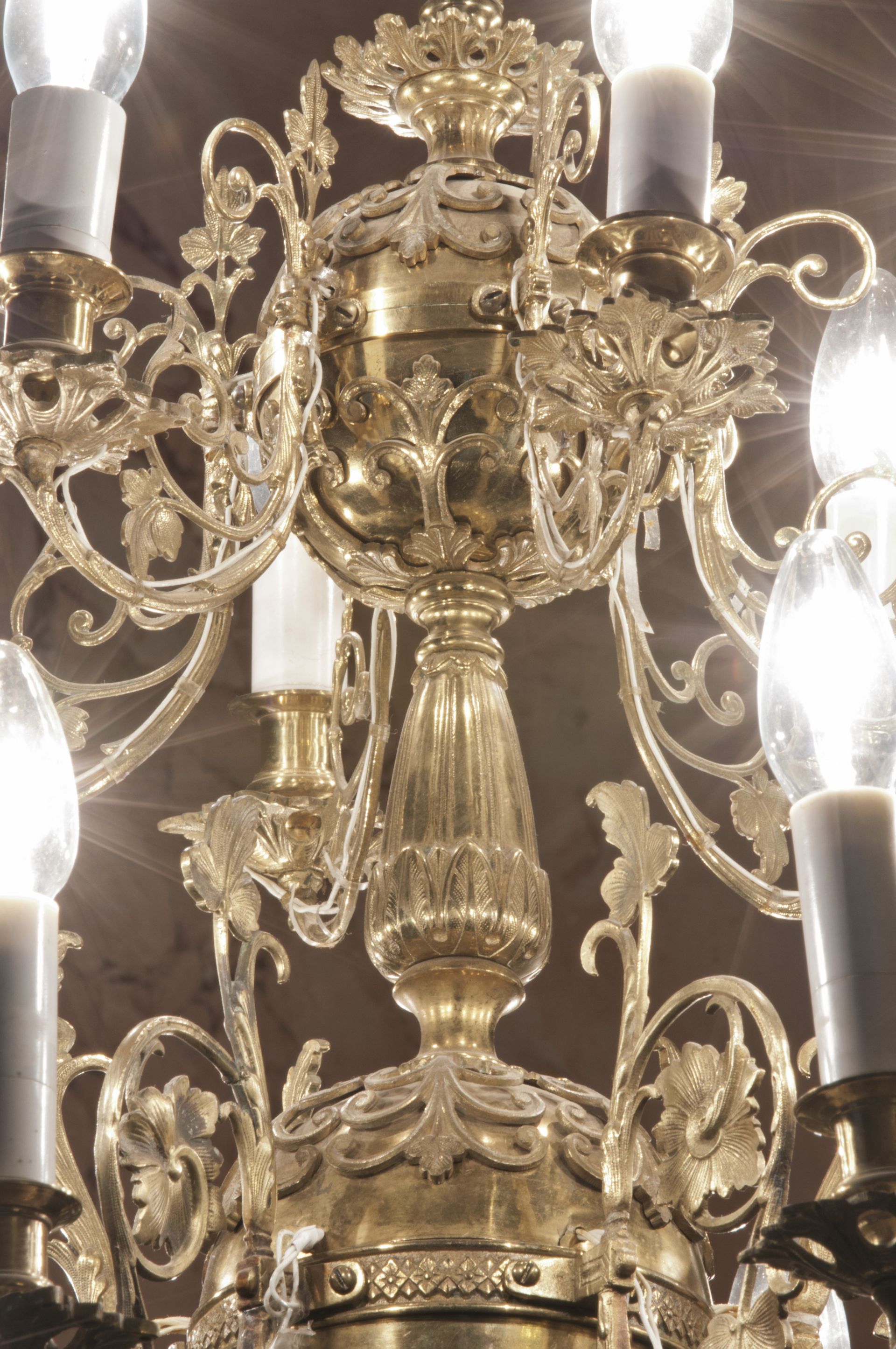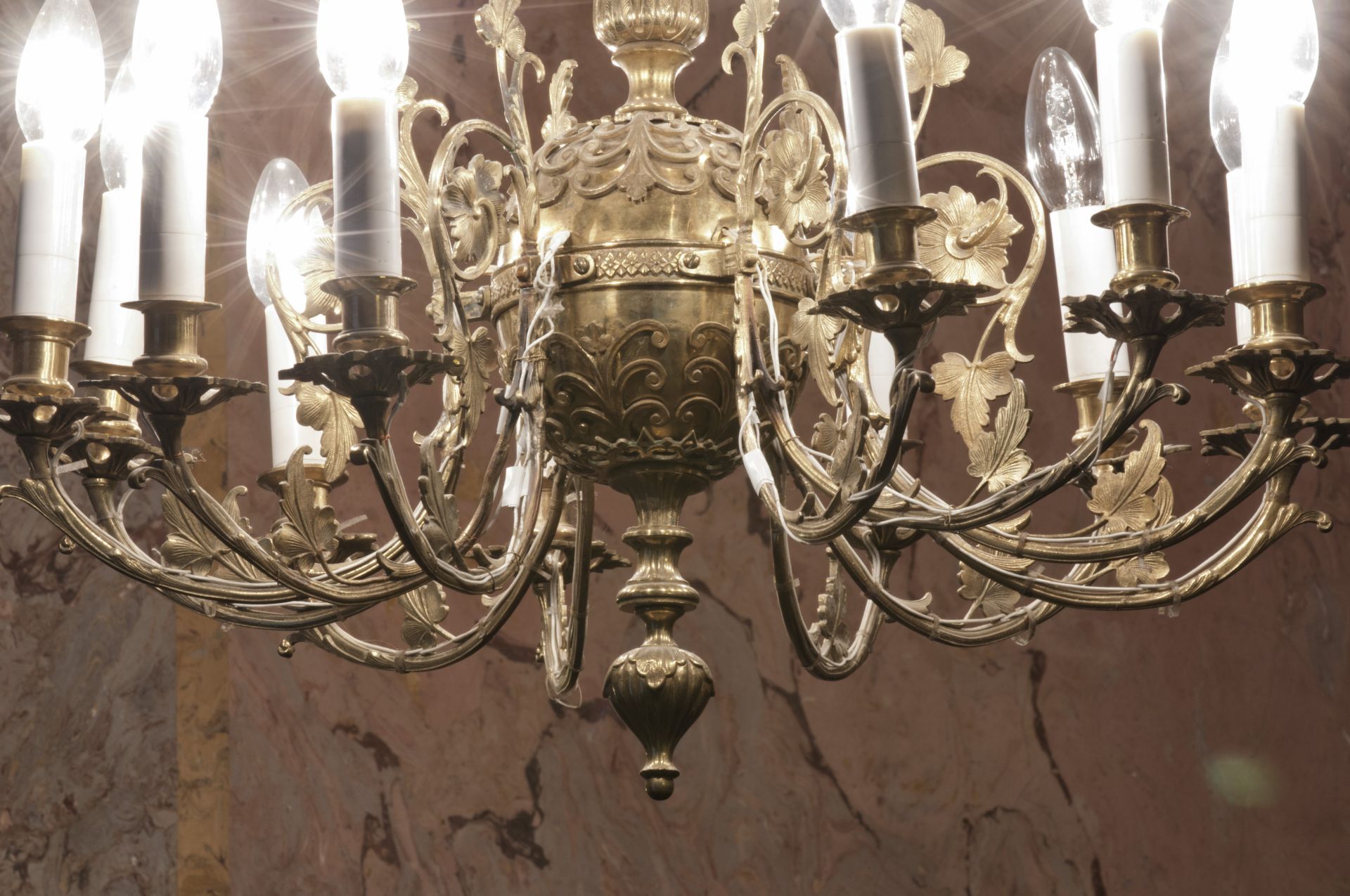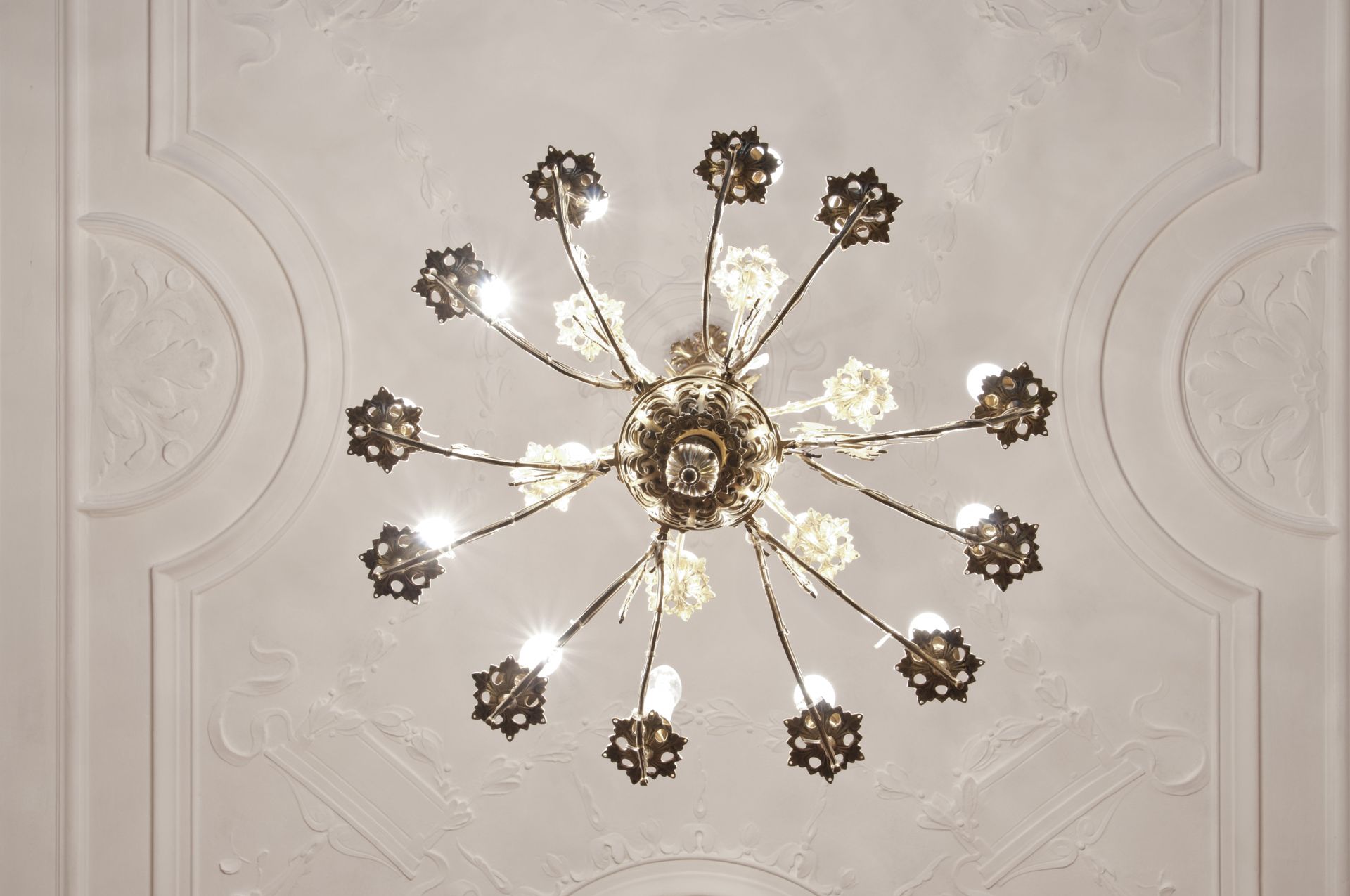Lithuanian National Museum of Art
Inv. No. TM-2591
Address: Arsenalo st. 3A, Vilnius (currently on exhibit at the Counts Tyszkiewicz Palace in Palanga, Vytauto str. 17, Palanga)
Time of origin: 1887–1925
Place of origin: Poland, Warsaw
Material, Technique: bronze: casting, chasing
Dimensions: height – 95 cm
The chandelier from the Lithuanian National Museum of Art is typical ware from an unknown Warsaw workshop of the late 19th century – first quarter of the 20th century. It belongs to the stem-type chandelier and has 18 arms: 12 in the lower crown and 6 in the upper crown. The stem consists of wavy leaves at the top of the rosette, a tube ornamented with small grape leaves, two spheres, a baluster between them and a bud-shaped finial at the terminal. The C-shaped arms are attached to the spheres and adorned with cast grape leaves. Tracery drip pans to collect falling wax are more decorative than functional. The spheres of the chandelier are decorated with baskets and tracery motifs of palmettes.
This chandelier is on exhibit at the restored Countess's office of the Counts Tyszkiewicz Palace in Palanga. An identical lighting mean decorates the church of the St. Guardian Angels in Paežerėliai (Šakiai district) and one more is preserved in the National Museum of Lithuania.
At the turn of the 19th and 20th centuries, many chandeliers of similar size, structure and décor were imported into Lithuania from the large metallurgical centre — Warsaw. They were most often used to decorate church interiors.
The chandelier is valuable because it typologically complements the group of industrially produced chandeliers of historicism style in Lithuania.
Literature and sources:- Valtaitė-Gagač Alantė, „XIX a. II p.–XX a. I p. sietynų gamyba pramoninėse Europos dirbtuvėse ir jų paveldas Lietuvoje“, in: Acta Academiae Artium Vilnensis, 2011, t. 61, p. 63–75.
- Valtaitė-Gagač Alantė, XVII a.–XX a. 4 dešimtmečio sietynų paveldas Lietuvoje: Daktaro disertacija, Vilnius: Vilniaus dailės akademija, 2015, p. 222, 226.
